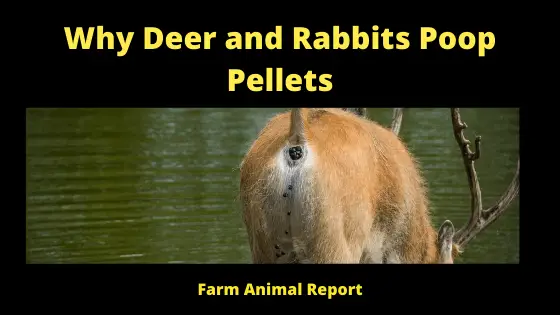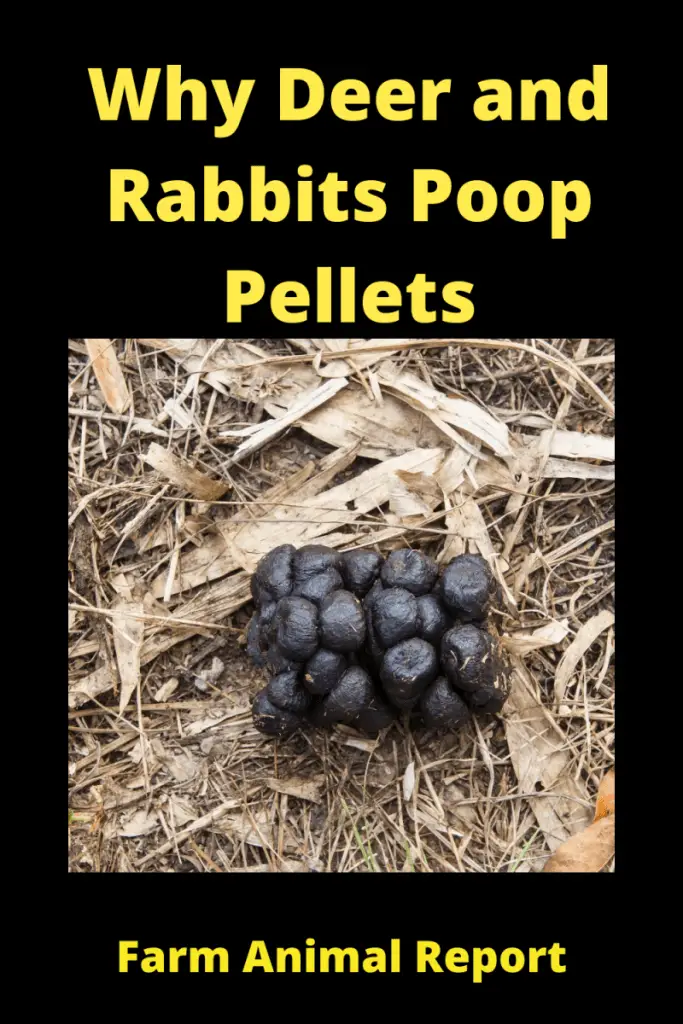Deer Poop Pictures – As a general rule, the difference between rabbit and deer feces is evident at first glance. Rabbit pellets are rounder in shape with a rougher texture that has been indented on one end and slightly pinched off from another side
The lighter brown color makes them easier for predators to spot among other prey while their shiny exterior provides more contrast against their surroundings than black or dark-colored droppings would produce – not forgetting about all those distinctive characteristics!
What Do Deer Poop Pictures / Shape of Deer Poop | Rabbit Poop Pictures
What Does Deer Poop Pictures Look Like – Why Deer and Rabbits Poop Pellets also called Deer Scat. A combination of things is involved, and the phenomena lie in large part in the digestive tract itself.
In animals such as rabbits, the feces are formed into pellets by the colon, which pushes them out into the rectum rhythmically and leads to a uniform shape and size. Of course, the rectum plays an important role. Deer Poop Pictures
Check Out Amazons Resources on Ruminant Digestion Systems
Rabbit Poop vs Deer Poop is different in these Manners (Images)
Some animals have internal muscles that control the process to a degree, such that each deer’s feces comes out virtually the same shape and size. Essentially, the rectum acts a lot like a press. Caterpillar, which lacks a sphincter or colon, derives the shape of their droppings entirely from the rectum.
At the same time, the dropping shape of animals like sheep, goats, deer, and rabbit is due to a combination. Horse apples are not quite as consistent, but they are close. When the feces are more amorphous, only the anal sphincter contributes to the shape.
You can also Read our Guide –18 Ways to Make Money by Rabbit Farming—Extensive Guidelines for Rabbit Farmers
If the sphincter stays open a long time, you tend to get long, unbroken masses, as in humans. The phenomena do not strictly correlate with the fibrous masses but most definitely have soupy poop. The digestive process itself- which is different in cattle- is also a factor. This is also called rabbit scat vs deer scat.
In Easy Words, it is a Combination of the Following Factors.
- The colon
- The rectum
- The diet and how it is digested.
Rabbits are hindgut fermenters similar to horses, and their large cecum is used similar to a rumen for anaerobic microbial digestion of roughages they consume.
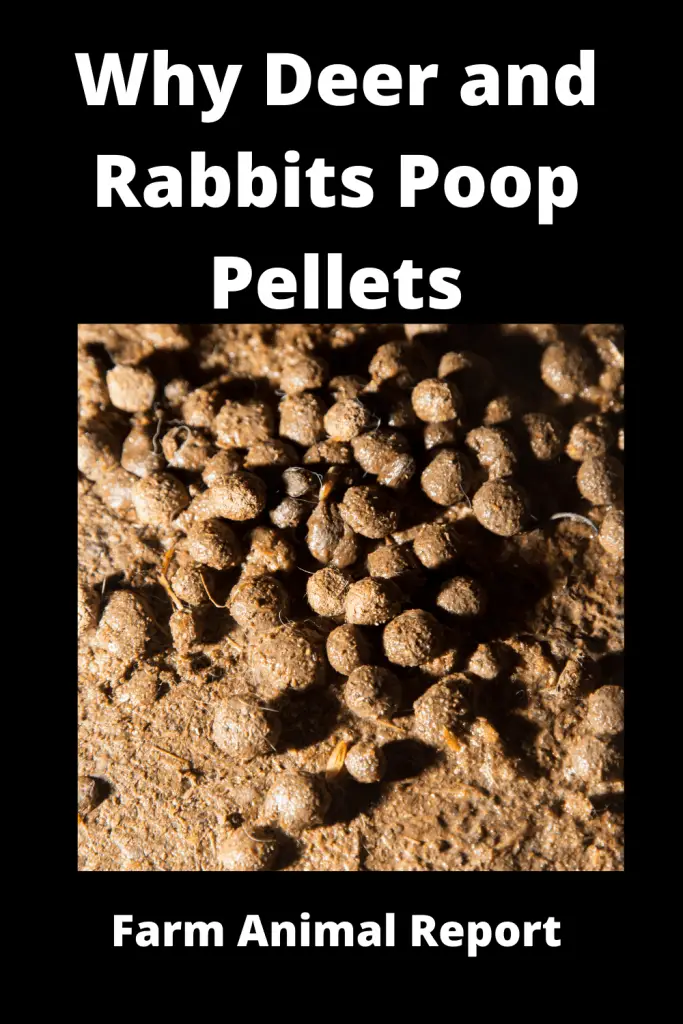
buck
What Does Deer Poop Look Like – Small ruminants such as rabbits have the same four stomach compartments as a cow but have spiral cecum also which may have something to do with the consistency of pellet-like excrement they make differently. Horses usually make the larger pellets as rabbits do because of their similar digestive tract anatomies.
Rabbits have a unique digestive system, but round pellet poop is not that different. The pellets as feces are generally correlated with how much water gets absorbed from the food in the colon. It may happen in humans if the humans get dehydrated.
See Our Extensive Article – 7 Ways Deer Farmers Make Money
buck hunting – deer biologists – wildlife agencies
What Does Deer Poop Look Like? ( Droppings Stock Photos)
Deer poop is deposited in clumps.
The color of deer scat varies depending on the animal’s diet. For example, if a deer has been eating blueberries or raspberries, its droppings will be reddish-brown, pinkish to bright red in color. If it has been eating carrots, which are orange in color, the deer scat will be orange. If it has been eating hay, its droppings will be yellowish-brown.
Some people think that the color of deer scat can help them determine what type of food a deer’s diet consists of.
This is not true because all waste products are affected by the bacteria in the animal’s digestive system, and the contents of its meal will be altered within a few hours, and it may bear little resemblance to the original food.
Also, deer scat is not always brown in color; it can be green or white if the animal is eating grass or hay that has been recently cut.
Poop also called feces, stool, or scat is the universal metabolic byproduct of the digestive tract. Most poop gets disgusted and appalled by it, but it is a fact of nature. Defecating is vital in cleansing our bodies and getting rid of toxins. Excretion of feces aids in maintaining our overall health and help discharge harmful bacteria from the body.
Our poop differs in color, shape, size, and shape, etc. these factors could be an indication of our health and lifestyle. Not only humans defecate, but also other animals defecate.
Deer poop or scats usually look like bullet-shaped pellets that have an indentation on one end and point on the other end. The droppings are usually small and clustered.
The color ranges from green to brown to black, depending on their diet. Deer droppings can aid in identifying deer feeding habits, their favorite bedding and eating spots, and their proximity to the area. Fresh, warm, and moist poop could indicate that they are nearby.
There are similarities between the scats of the deer and other animals like goats and rabbits, but people can differentiate deer poop due to its small size. Because of this, the structure can easily be identified by the hunters.
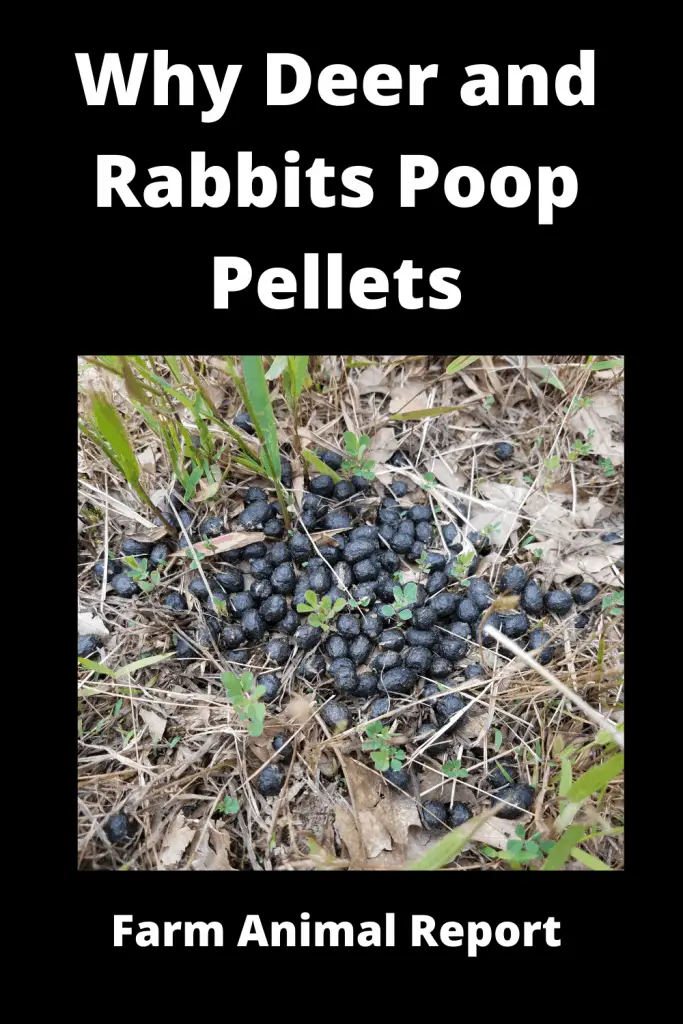
What Does Deer Poop Smell Like?
Deer poop is large and round, which can make it difficult to see when walking through a wooded area. These types of droppings are usually dark green in color with small brown pellets inside the main body of the pellet. This type of feces will often be found on top of rocks or along hiking trails where deer tend to pass by.
While most people believe that deer poop does not smell, this is actually a common misconception. Deer scat often smells of rotting food mixed with the distinctive scent of urine and may have an orange or rust color if it has been sitting out in the sun for some time.
Deer produce copious amounts of healthy fertilizer to help keep plants and trees healthy. The deer’s digestive system is very good at breaking down and digesting leaves, which means that it takes a lot of food to produce the poop you see in your backyard or on the trail during an afternoon hike.
When this abundance of fresh plant material mixes with bacteria inside the deer’s gut, chemical reactions happen that create small amounts of methane gas.
This is what causes the deer scat to smell so much, particularly after rain or if it has been sitting around for a while and bacteria have had time to grow in the droppings.
Features of Deer Poop-Round Individual Droppings
Structure – identify
Deer droppings are usually piled in small shaped, oval-shaped, pellets. Normally, the pellets will clump and cluster together to form a solid scat. The deer’s feeding habit greatly affects the structure of the poop and its other features.
When the deer feed mostly on leaves, acorns, and twigs, their poops are round, separate, and firm. On the other hand, grasses, apples, alfalfa, clover, and another type of forbs result in lump droppings.
Steaming and warm poop means that it is fresh and the deer just left. As time passes by, it will lose its color, get drier, shrink, and crumble.
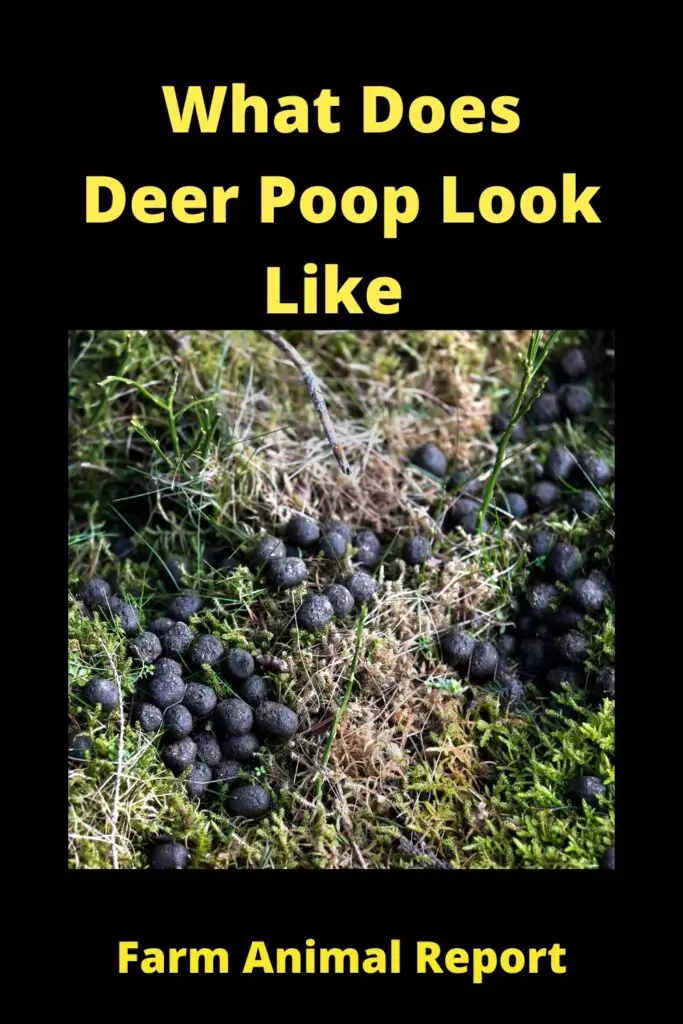
Color of Deer Feces
The color of the deer scat ranges from different colors depending on their diet. Usually, the color is green, brown, or black. Green scats may indicate that the deer has been consuming large amounts of green vegetables.
It may also indicate that their bile pigments were not sufficiently broken down, causing diarrhea. Brown and black poops are usually of those colors because of the dead red blood cells and bile.
Size of Deer Poop ( droppings are usually )
Some hunters can claim that they can identify the sex of the deer by just looking at the size of the deer droppings.
The reason for the small size of the deer poop is because of their colon. A deer’s colon works in a rhythm of opening and closing the sphincter. This type of movement results in small and round-shaped pellets.
Count
The count or number of deer droppings in the area may determine the number of deer in the proximity. But this is not always as true as some deer tend to defecate too much that people could mistake them for being more than how many they are.
On average, a deer defecates thirteen times a day, ninety-three pellets per time.
Some biologists and researchers have found out that during spring and fall, deer averages more piles of scat. This, again, is due to the factor of their diet. The defecation rate differs from the diet.
Location – Wild
The location where deer scat ( leave droppings) was found is usually where they are feeding, sometimes in bedding areas, but this is not always the case. The type of deer droppings can be an indication that the deer is in proximity.
Take a closer look at the poop and examine it. If it is a little wet and warm, then the deer is probably around the proximity because its features indicate that the deer has taken recent dumping around the area.
But you still have to check for a few more days to determine if they are frequently staying in the same area or if they just passed by and took a dump at that place.
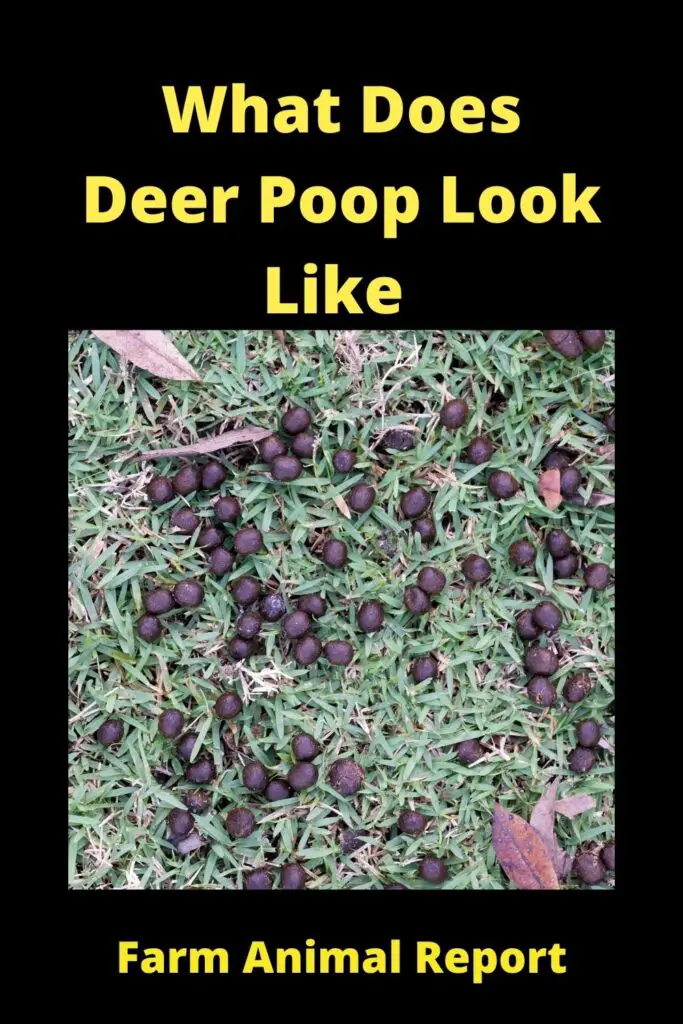
Differentiation of Deer Poop From Other Animal Poop
It is quite evident that poop or fecal material of different animals looks alike. And it is ridiculous to try to identify which animal is the owner of the poop.
But, you are mistaken because information could be useful for hunters, people who live in the wild, or just simply curious people. Here are some of the features that help us explain the different features of poop of different animals from the poop of the deer.
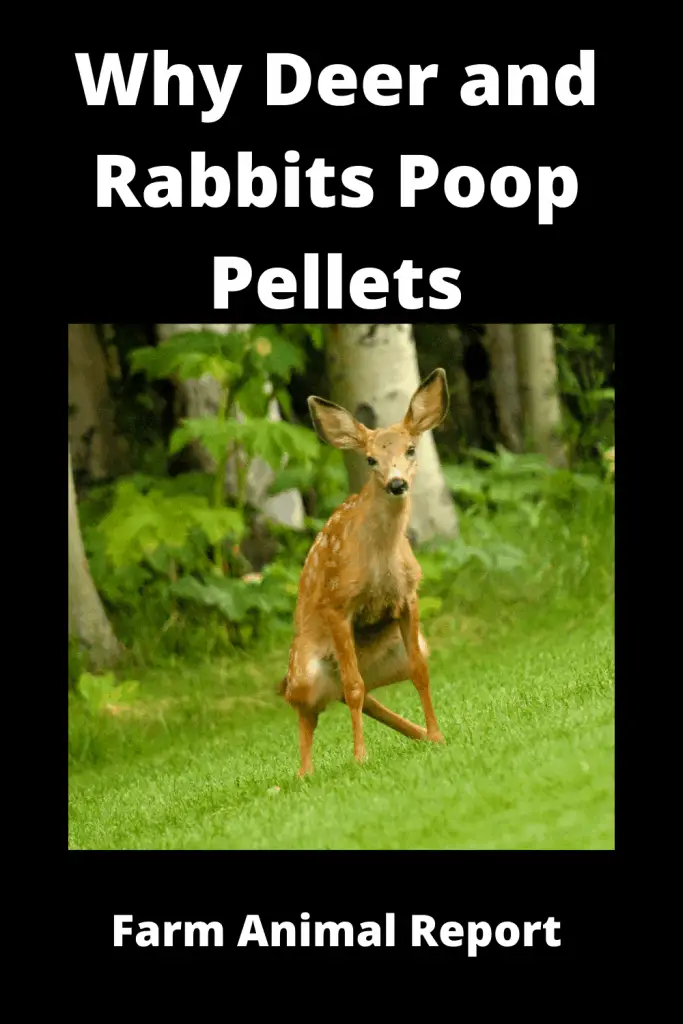
What Does Baby Deer Poop Look Like?
In the first few days of life, a fawn’s mother will lick their bottoms clean. Once they are out and about, it is up to them to take care of that business themselves.
They typically only do it once or twice a day for very small amounts of time. The feces can change in color from yellowish-green when they are first born to a brownish color as they age.
What Animal Poops Little Balls?
Goat Feces
Goat scats are of similarity to deer scats because they have similar feeding habits. The appearance of poop looks like large raisins. At times, when their poops look similar to a dog’s poop; instead, it could mean that the goats have diarrhea. People can tell apart deer scats from goat scats due to their smaller size.
Rabbit Poop
Rabbit droppings are usually dry and round fecal pellets. They eat their poop if the poop is wet. Yes, it is written quite right.Rabbits’ droppings are usually brown due to the excessive amount of bark that they consume. Compared to rabbit poops, deer poops are smoother and more oval-shaped. Rabbit poops are rounder and rougher.
Raccoon Feces
Just like deer scat, the droppings of the raccoon are found in piles. They are tubular and have pointed ends. The droppings are usually of dark color and a little longer than deer scats. For hunters, these characteristics easily tell them apart from each other.
Elk Feces
Elk droppings often, but not always, occur in piles. Elks usually walk while taking a dump, causing the poops to be spread out. Thus, this is their significant difference from the deer poop. Also compared to deer droppings, they are larger and longer.
Squirrel Poop
Squirrel poops are also in pellets and with round edges. They are of similarity to deer due to the pellets, but the squirrel poops are fractionally shorter and narrower. Also, the droppings of the squirrels appear shinier due to their moisture content.
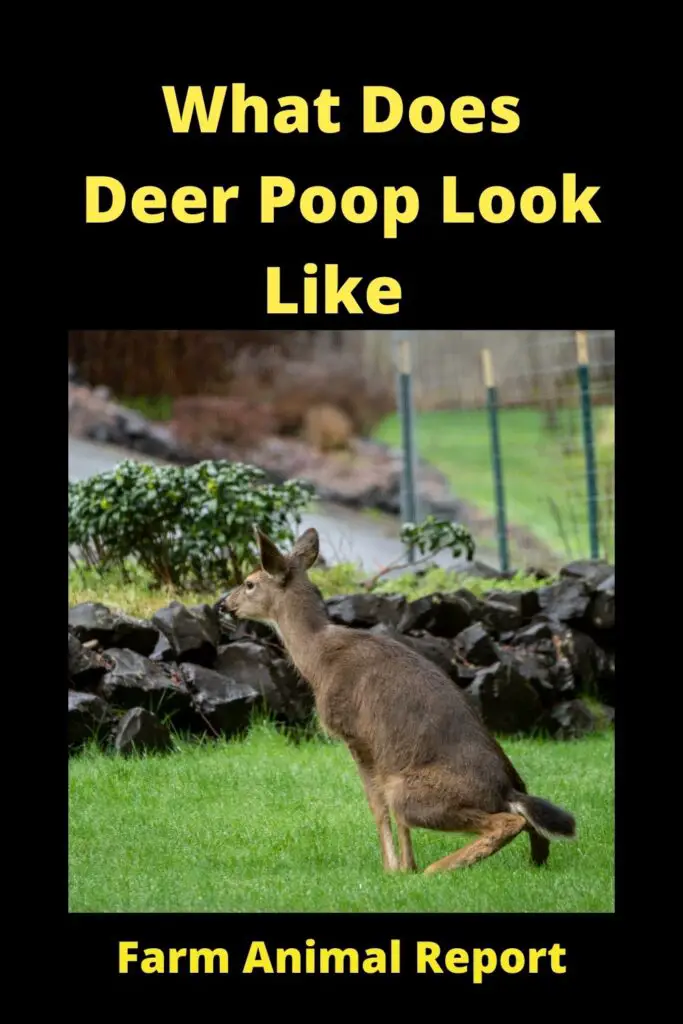
Why are Deer Droppings So Tiny?
The deer are large animals but produce a pile of very small pellets. Without having a scat in hand for good examination, it could be a few things if the pellets are unusually small.
First, make sure that the scat has a slight point at one end and a slight dimpling on the other end. This will let you know it is likely deer and not something like a cottontail rabbit or brush rabbit or squirrel. If it is very small, even for deer, it might be a fawn, especially this time of year. Smaller deer usually make smaller scat.
Also, with dry vegetation during summer, and for the many years we have been in this drought, the pellets become smaller and more compact than winter scat. Where deer have been feeding off of lush green brought on by the rain, (water sources) tends to adhere to large clumps or cake.
They produce a quantity of scat over a day, as do many herbivores, but instead of producing a big poo, as cows do, they produce many small ones.
Sheep, goats, antelope, and other ungulates all do the same things; lots of small poops. Cows are bison are ruminants, and their digestive work a bit differently, so they tend to produce a few, but a very large Frisbee-sized poo.
Why Do Rabbits Have Round Pellets?
Their innards pinch off tiny pellets as part of how they process the food. The same goes for many other plant-eaters like deer and elephants, except the pellets are a lot larger.
Rabbit’s main menu is planted like grass and clover. In their gut, water is added to break down and process the nutrients out of the crushed plant material.
And in the case of fresh grass, a lot of it comes from the plant itself, leaving behind the fiber. The food works its way through the intestine as the nutrients are slowly extracted.
The water is pulled back out of the process as the material reaches the end of the intestine. The squeezing process forms tiny individual pellets of largely undigested fiber, which are then pushed out of the end. Meat eaters like big cats and omnivores do not have round pellets because there is not as much fiber in the diet.
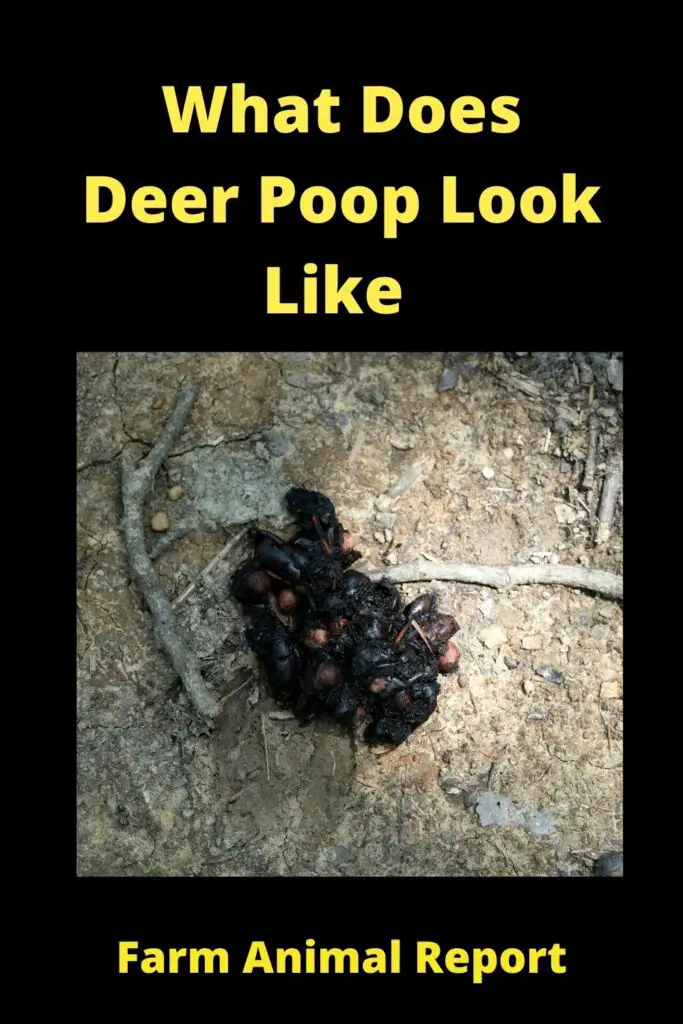
Why Does Deer Poop Come out in Pellets Rather Than Logs?
A deer’s colon creates soft little pellets due to its colon working in an automatic rhythm, opening and closing the sphincter. It is this type of movement that results in the shape of the small pellets, versus animals like dogs and humans where the sphincter stays open for a longer period, resulting in larger and longer droppings.
Fortunately, if you step in a few deer pellets, they are dry and solid not enough to get stuck to your shoe, unlike your doggie poop.
How Often Do Deer Poop?
Both cows and deer do their business about 13 to 14 times a day. An average deer pile contains 93 pellets. Counting them must be fun.
How to Differentiate Rabbit and Deer Poop?
Firstly, it would take a lot of bunnies to fill up your yard with the same quantity as a few deer. Also, rabbit pellet tends to be lighter brown feces, while deer pellets are dark brown or black.
Rabbit pellets are rounder and have a rougher texture, while deer pellets are slightly elongated. Deer pellets have a distinctive tiny indent on one end and are slightly pinched off on the other. The outside of each pellet is smooth and shinier than a rabbit pellet.
Other Important Tags
- deer droppings pictures
- forest deer droppings
- roe deer droppings
- spring deer droppings
- droppings stock photos
- deer droppings stock
- videos
Unique Facts about How Deer Poop
- Deer poop is typically pellet-shaped due to their four-chambered stomachs. Deer have to digest their food twice, which is why their poop comes out in pellets.
- Deer poop can vary in color depending on their diet. Grass-eating deer typically have lighter-colored pellets, while those that eat more nuts and fruits have darker pellets.
- Deer poop is very high in nitrogen, which helps fertilize the soil, making it a valuable resource for farmers and gardeners.
- Deer poop is a great source of food for small animals such as birds and rodents.
- Deer poop can contain up to 30 different kinds of parasites, making it important to not touch it without gloves on.
- Deer poop can be used as a natural repellent to keep other deer away from your garden.
- Deer poop can carry diseases such as E. coli, salmonella, and Giardia, so it’s important to take precautions when handling it.
- Deer poop is often used as an indicator of the health of the deer population in an area.
- Deer poop is a valuable source of nutrition for wild animals, as it contains essential nutrients such as protein, calcium, and phosphorus.
- Deer poop is a great source of energy for scavenging animals such as bears and coyotes.
Final Thoughts – What Does Deer Poop vs Rabbit Poop Look Like
Deer, just like humans, have an excretory system responsible for poop. The feature of the poop greatly affects our diet, lifestyle, etc. the information above could be useful for hunters for increased chances of a successful hunt because it can give a hint on whether or not a deer can be sighted around. It also gives additional information to curious minds which could probably come in handy in the future.
Deer / Cervid Farming / Profitability Table
| Deer Type | Ave Weight | Average Calves/Yr | Gestation | Meat Retail Price/lb |
|---|---|---|---|---|
| White Tailed | 150 | 2 | 201 | $ 38.95 |
| Mule | 120 - 320 | 2 | 203 | $ 7 - 9.50 |
| Elk | 71- - 730 | 1 | 240 - 262 | $ 44.95 |
| Reindeer | 350 - 400 | 1 | 222 | $ 74.95 |
| Moose | 840 - 1500 | 1 | 243 | $ 7.50 |
| Sika | 93 | 1 | 224 | 34.95 |
| Red | 440 | 1 | 236 | $ 35.95 |
| Pere David's | 370 | 1 | 286 | |
| Axis | 79 | 2 | 227 | $ 29.99 |
| Mutjah | 30 | 1 | 214 | $ 39.95 |
Types of Deer for Deer Farming
| Breed of Deer | Weight | Price of Venison | ||
|---|---|---|---|---|
| Whitetail | Buck - 150 lb Doe - 100 lbs | $ 29.50 | ||
| Mule | Buck - 150 - 300 lbs Does - 95 - 200 lbs | $ 44.95 | ||
| Red | Buck 350 - 530 lbs Doe 260 - 370 lbs | $ 21.95 | ||
| Fallow | Buck - 130 - 200 lbs Does - 60 - 90lbs | $ 39.95 | ||
| Axis | Bucks 150 - 250 lbs Does 90 - 150 lbs | $ 43.95 | ||
| Reindeer | Buck 350 - 400 lbs Does - 180 - 260 lbs | $ 74.95 |


